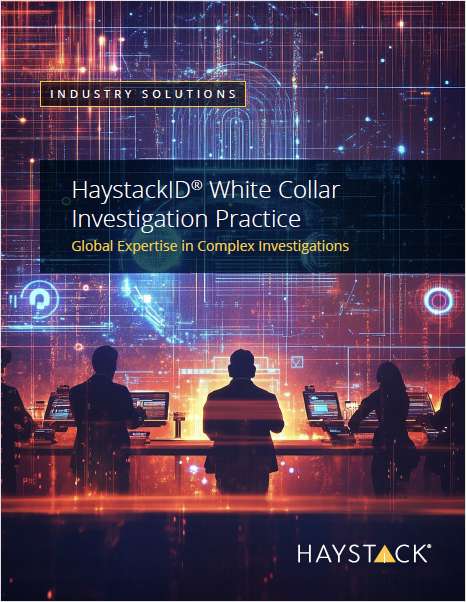 Working businessman
Working businessmanHigh-Rate Work Went to the Largest Law Firms Last Year, but Discounts Are Now Rising
The largest 50 firms by attorney head count commanded 77% of M&A work, according to a new report.
July 14, 2020 at 11:25 AM
4 minute read
The original version of this story was published on The American Lawyer
Large law firms continued to dominate high-rate work last year, but as clients reexamine their relationships during the pandemic in 2020, law firms have been heavily discounting, according to a new report based on law firm invoices.
For its 2020 Enterprise Legal Management Trends Report, CounselLink said it analyzed charges billed by outside counsel derived from nearly $35 billion in legal spending and almost 7 million invoices.
According to the report, the country's largest 50 law firms, which each have more than 750 attorneys, earned 62% of invoice amounts billed last year in three combined categories: mergers and acquisitions; corporate, general and tax; and finance, loans and investments.
"[The largest firms] really have a hold on those markets," said Kris Satkunas, director of strategic consulting at LexisNexis CounselLink and the report's author. "It's almost a chicken-and-the-egg thing: the larger the firm, the higher its rate. But a higher rate drives up the firms' average income, meaning the firm can grow even larger."
Specifically, among its sample of invoices, the largest 50 law firms commanded 77% of M&A work; 63% of finance, loans and investments work; and 58% of corporate, general and tax work in 2019.
According to the report, partners at the largest 50 firms, who billed an average of $575 per hour, billed at rates 51% higher than law firms with 501-750 lawyers, where partners billed an average of $380 per hour. Partners at law firms with 201-500 lawyers, who billed an average of $201-500 per hour, billed at rates 29% higher than law firms with 101-200 lawyers, where partners billed an average of $295 per hour.
"I don't think people realize how strong the correlation is between the size of the firm and the rates," Satkunas said. Firms slightly smaller than the "largest firms" category, ones with head counts of 501-750 lawyers, have an opportunity, she added, as clients look for high-quality legal work at a lower cost.
The report found that average partner rates among all law firms were $765 in M&A, $643 in corporate, general and tax; and $615 in finance, loans, and investments. Regulatory and compliance, trademark, patent and commercial were also relatively higher billing practice areas in 2019, with partners' average billing rates exceeding $500 per hour.
Partner rates grew in major cities from 2018 to 2019, with partner rates in New York increasing 6.9%; rates in Boston increasing 5.9%; rates in San Francisco increasing 5.7%; rates in Washington, D.C., increasing 5.2%; and rates in Chicago increasing 4.7%. Miami, Minneapolis and Phoenix all had partner rate growth below 3% in 2019.
The report also studied the consolidation of outside counsel, finding that for 58% of companies in its data pool, 10 or fewer law firms accounted for more than 80% of external legal bills. This number is similar to the consolidation figures in previous studies. Manufacturing companies; professional, scientific, and technical services companies; and retail trade companies had high degrees of outside counsel consolidation, while the insurance industry had a lower degree of consolidation.
As clients reexamine relationships with their law firms this year during a recession, Satkunas said the industry may see more discounted bills. And the CounselLink data is bearing that out. The report found a trend of increased discounting in the past few months of 2020, with more than 16% of bills discounted in May, a threshold normally crossed only at the end of the year.
However, Satkunas added she was hopeful that more firms will work with clients to adopt alternative fee arrangements, which have grown in popularity in recent years. In 2019, 12.1% of matters were billed with an alternative fee arrangement, up from 9.2% two years ago, and she said there is now an opportunity for firms and clients to be more creative.
"Every time I see a bump [in the share of matters billed under a form of alternative billing], I'm hopeful that we're finally moving away from talking about alternative fee arrangements and starting to embrace them," she said. "We're seeing that uptick in invoices being discounted, and I hope those two things go hand in hand: that more creative pricing also comes into play."
This content has been archived. It is available through our partners, LexisNexis® and Bloomberg Law.
To view this content, please continue to their sites.
Not a Lexis Subscriber?
Subscribe Now
Not a Bloomberg Law Subscriber?
Subscribe Now
NOT FOR REPRINT
© 2024 ALM Global, LLC, All Rights Reserved. Request academic re-use from www.copyright.com. All other uses, submit a request to [email protected]. For more information visit Asset & Logo Licensing.
You Might Like
View All


Shareholder Activists Poised to Pounce in 2025. Is Your Board Ready?

NLRB Bans 'Captive Audience' Meetings, Yanking Away Platform Employers Used to Combat Unionizing
Trending Stories
- 1Elon Musk Names Microsoft, Calif. AG to Amended OpenAI Suit
- 2Trump’s Plan to Purge Democracy
- 3Baltimore City Govt., After Winning Opioid Jury Trial, Preparing to Demand an Additional $11B for Abatement Costs
- 4X Joins Legal Attack on California's New Deepfakes Law
- 5Monsanto Wins Latest Philadelphia Roundup Trial
Who Got The Work
Michael G. Bongiorno, Andrew Scott Dulberg and Elizabeth E. Driscoll from Wilmer Cutler Pickering Hale and Dorr have stepped in to represent Symbotic Inc., an A.I.-enabled technology platform that focuses on increasing supply chain efficiency, and other defendants in a pending shareholder derivative lawsuit. The case, filed Oct. 2 in Massachusetts District Court by the Brown Law Firm on behalf of Stephen Austen, accuses certain officers and directors of misleading investors in regard to Symbotic's potential for margin growth by failing to disclose that the company was not equipped to timely deploy its systems or manage expenses through project delays. The case, assigned to U.S. District Judge Nathaniel M. Gorton, is 1:24-cv-12522, Austen v. Cohen et al.
Who Got The Work
Edmund Polubinski and Marie Killmond of Davis Polk & Wardwell have entered appearances for data platform software development company MongoDB and other defendants in a pending shareholder derivative lawsuit. The action, filed Oct. 7 in New York Southern District Court by the Brown Law Firm, accuses the company's directors and/or officers of falsely expressing confidence in the company’s restructuring of its sales incentive plan and downplaying the severity of decreases in its upfront commitments. The case is 1:24-cv-07594, Roy v. Ittycheria et al.
Who Got The Work
Amy O. Bruchs and Kurt F. Ellison of Michael Best & Friedrich have entered appearances for Epic Systems Corp. in a pending employment discrimination lawsuit. The suit was filed Sept. 7 in Wisconsin Western District Court by Levine Eisberner LLC and Siri & Glimstad on behalf of a project manager who claims that he was wrongfully terminated after applying for a religious exemption to the defendant's COVID-19 vaccine mandate. The case, assigned to U.S. Magistrate Judge Anita Marie Boor, is 3:24-cv-00630, Secker, Nathan v. Epic Systems Corporation.
Who Got The Work
David X. Sullivan, Thomas J. Finn and Gregory A. Hall from McCarter & English have entered appearances for Sunrun Installation Services in a pending civil rights lawsuit. The complaint was filed Sept. 4 in Connecticut District Court by attorney Robert M. Berke on behalf of former employee George Edward Steins, who was arrested and charged with employing an unregistered home improvement salesperson. The complaint alleges that had Sunrun informed the Connecticut Department of Consumer Protection that the plaintiff's employment had ended in 2017 and that he no longer held Sunrun's home improvement contractor license, he would not have been hit with charges, which were dismissed in May 2024. The case, assigned to U.S. District Judge Jeffrey A. Meyer, is 3:24-cv-01423, Steins v. Sunrun, Inc. et al.
Who Got The Work
Greenberg Traurig shareholder Joshua L. Raskin has entered an appearance for boohoo.com UK Ltd. in a pending patent infringement lawsuit. The suit, filed Sept. 3 in Texas Eastern District Court by Rozier Hardt McDonough on behalf of Alto Dynamics, asserts five patents related to an online shopping platform. The case, assigned to U.S. District Judge Rodney Gilstrap, is 2:24-cv-00719, Alto Dynamics, LLC v. boohoo.com UK Limited.
Featured Firms
Law Offices of Gary Martin Hays & Associates, P.C.
(470) 294-1674
Law Offices of Mark E. Salomone
(857) 444-6468
Smith & Hassler
(713) 739-1250








